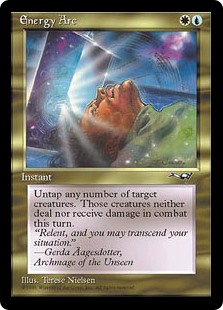Games, by and large, provide a sense of pacing and progression. At the start of any game there exists a blend of frenetic energy and of open potential. The slate is clean, the score reset. At the beginning anything is possible and anyone can win. Everyone is on equal footing. There’s an excitement that’s hard to resist in that moment. You want to start out of the gate strong, releasing your pent up anticipation into the experience and see if your strategy and ambition can carry yourself across the finish line.
It’s a hard sensation to top, save for the enthrallment of coming out the other side of the contest as the winner, the victor of an enjoyable contest between friends and peers.
However, despite both ends of the process being rather fixed points in the experience, it’s the middle part, the actual part of the competition, that is more complicated.
When it comes to most tabletop games, nearly everyone treats the playthrough as a linear experience. You get your initial resources, build up some forces, make some upgrades, improve your technologies, and expand your influence. Whether it’s a cube-pushing Euro or a battlefield skirmish brawl, tabletop design by and large is fueled by the notion of a progressive experience. Even if you don’t win, the longer the game goes, you are still better off than where you started. It has to. Since most tabletop games have a desired play time, they must be constructed in a way that they end in a roughly consistent period. They propel everyone forward to matter what – however uneven things may be – towards an inevitable conclusion. Perhaps you catch up to the winner, perhaps you don’t. But it’s very rare that your efforts leave you at roughly the same point as when you started. Even if you lose, progress was made and choices led to advancement of some kind.
Multiplayer Magic doesn’t operate the same way.
If anything, multiplayer Magic is more like a sport, where you can, in fact, end up with the same score at the end. You can be easily shut out and shut down by superior opposition. You can be undone by pure bad luck, despite attempts to mitigate it. Games in the multiplayer world such as EDH don’t follow a straight line. Instead, they ebb and flow like the tide, with the potential for anyone to be swept up or swept out by the currents it generates. Its waves can carry you forward or slam you to the ground. Between the players involved and the degree of luck involved, multiplayer Magic is much more of a back-and-forth experience, where even the surest moments can change in an instant. It’s simply impossible to look at the board at any given moment and accurately predict with absolute certainty what the final outcome will be.
In such an environment, then, the best one can do is be as best prepared as possible. And this week’s card should help with that.
Today we have: Energy Arc

Name: Energy Arc
Edition: Alliances
Rarity: Instant
Focus: Damage Prevention / Combat Control
Highlights: Though Green has traditionally and primarily been the color of Fog effects since the game’s very inception, the ability to nullify or more creature from dealing damage in combat has appeared at least once in all five colors. In fact, for a number of years Wizards pushed White as the second combat prevention color before pulling back, with Energy Arc possibly being an early forerunner of the idea. And it’s a good one.
For just two mana (an important ingredient to worthwhile Fog cards), Energy Arc follows the well-trodden path by stopping combat damage from occurring in a very cost-effective manner. In standard fashion, this style of card can be used during any combat to prevent creatures from dealing damage, regardless of whether or not you’re involved. This means that you can use it both defensively to stave off attacks against you, but also diplomatically to help prevent one or more other players from potentially lethal damage – earning yourself some political goodwill. Moreover, you also possess the ripcord scenario of saving your own creatures should you end up on the end of a surprise buff from blockers and having your attack go sideways.
However, unlike the blanket approach of limiting combat damage writ large, or stopping only a single creature from dealing damage, Energy Arc allows you to get much more granular with your choices, letting you untap any number of creatures and effectively remove them from combat. This is especially helpful in cases where certain aspects of combat may not go your way or if you want to avoid getting walloped by the heavy hitters whilst killing off the smaller creatures involved.
For an incredibly paltry investment, Energy Arc provides a surprise tactical move that simultaneously lets you dictate the outcome of combat the way you’d like without necessarily resorting to telling everyone to go back to their corners and think about what they’ve done.
It’s one and only downside really is that in order to negate the creature involved, you must be able to target it, which means that untargetable creatures can’t be bossed around this way. Still, though Commander arguably has a higher percentage of such creatures running around than other formats, it’s still not so prohibitive as to not be well worth the card slot.
It may not be able to stop the tide, but it certainly can stem it some.
Keep an eye out for us to be regularly featuring other more accessible-but-worth-it Commander cards going forward. In the meantime, we’ll keep the light on for you.
![]()
You can discuss this article over on our social media!
